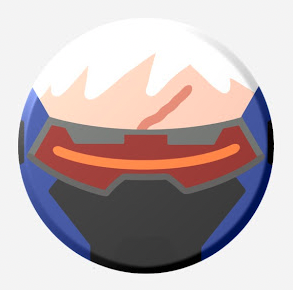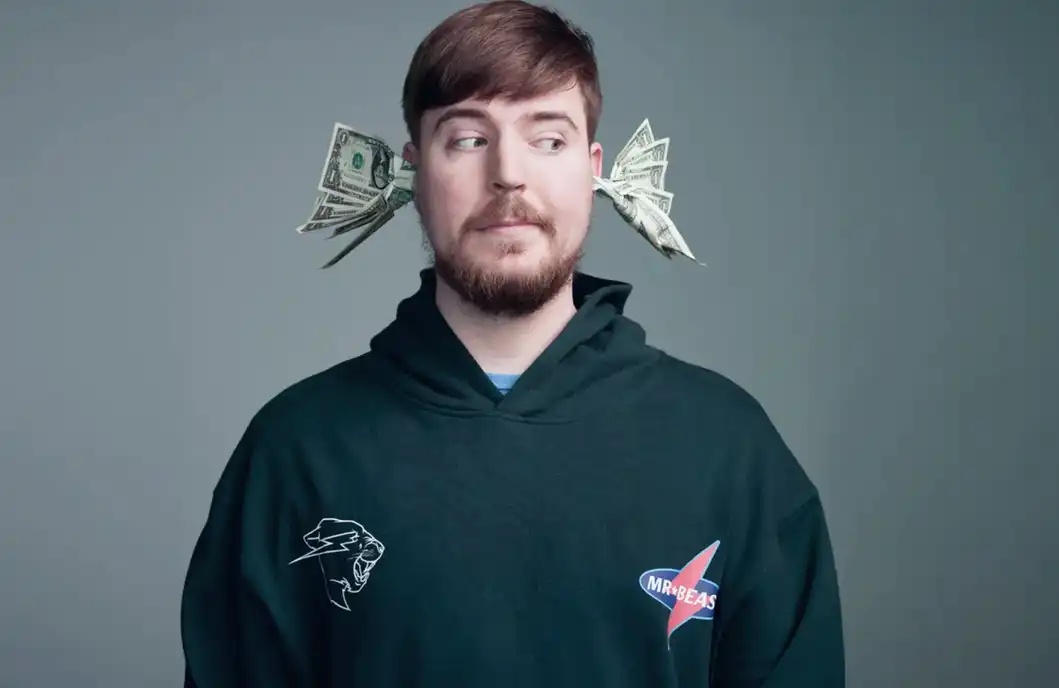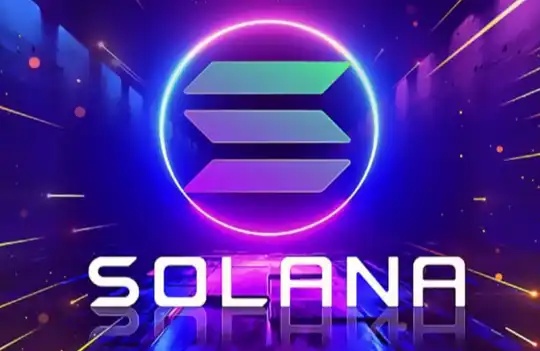Full Chain Games: A New direction for chain games in 2023
Article:0x76
Although the concept of blockchain gaming has been around for a long time, technically speaking, until the start of the 20-year bull market, it was difficult for the entire crypto industry to single out a representative blockchain gaming product.
DeFi's success has inspired other on-chain app developers, from games to other projects such as the social circuit, to learn from DeFi. As DeFi is composed of "De", which represents decentralization, and "Fi", which represents finance, the reference to DeFi's successful experience is actually divided into two completely different directions.
One idea is to integrate token incentives in DeFi to form GameFi, while another is to build a decentralized chain-game, or DeGame, based on DeFi's decentralization.
Apparently, during the recent bull market, chain games almost all chose the first option, spawning other spin-off concepts such as Play to Earn and even X to Earn. But the underlying structure of such projects is a centralized game running on a traditional server, with a token economy to incentivise users.
In the other direction of development, DeGame products, although there are very few players, but there are some more influential excellent representatives. The most typical example is Dark Forest, which has been systematically developing and experimenting projects since its establishment in the early 20 years. But because such projects generally do not issue tokens, there is certainly no room for hype in a bull market, resulting in a relative lack of attention in the rest of the mass market.
So, which of these two radically different development ideas is more likely to be the future of the blockchain gaming industry?
Before we answer this question, it's worth recalling the success story of DeFi, almost the only successful application-layer product, that has been used by all application projects to date.
The main lesson of DeFi's success
First, we need to redefine the scope of DeFi. Broadly speaking, DeFi can encompass almost any financial product built on blockchain, including algorithmstablecoins, derivatives, and more. The reality, however, is that the only DeFi products that have real intrinsic value and have withstood the long-term testing of the market are the Uniswap and Compound transactions and loans. Therefore, in the following article, we directly use the narrow definition of DeFi, that is, it only includes DEX and loan products using AMM mechanism.
The main lessons from the success of DeFi projects can be summarized as follows:
1. Due to its relatively decentralized characteristics, users can avoid the asset custody risk of the once centralized platform, prevent the platform from misappropriating user funds, withdrawing funds and other behaviors, and at the same time break the approval right of the traditional platform, thus forming a freer open market;
2.AMM algorithm and capital pool model greatly reduce the calculation cost of building financial logic in Ethereum, that is, gas cost, and improve efficiency;
3. Certain token incentive mechanism accelerated the early popularization of the product;
Therefore, from the successful experience of DeFi above, we can conclude that limiting the power of central nodes to do evil in the past through decentralization technology is the intrinsic value basis for the long-term existence of Web3 applications. The token incentive is only a catalyst to help early projects achieve better popularity once the foundation has been achieved.
Why did GameFi struggle to succeed?
If you accept the above conclusions, you can see that most of the current mainstream GameFi products have made no effort to "decentralize" at the product level. In addition to tokens and NFTS being registered and issued via blockchain, Gamefis' core business logic is still fully structured in a centralized manner, with the project side holding unfettered power within the game.
For a GameFi project to succeed, there are two bottlenecks. First, the project must have a game, if it is difficult to achieve, then the project can not generate intrinsic value, and eventually will become idle funds.
Another bottleneck is the moral hazard that project teams must face in the absence of a regulatory environment with centralized authority. As we've seen in the last two years, moral hazard is far more likely to occur than the difficulty of achieving playability, which is the fundamental reason why GameFi games are so rarely fun: the team's urge to do evil simply doesn't wait to develop playability.
For this reason, many of the GameFi projects that have emerged in the last two years have ended up as intentional or unintentional funding packages.
There is also a widespread myth in the narrative surrounding GameFi that GameFi governance tokens or NFT owned by users give them ownership of projects or game assets. As for why holding a token is not simply equivalent to ownership, in my previous article"Is ownership real in the Web3 economy?It has been discussed in detail in ", and will not be discussed here.
For all these reasons, the centralised games-plus-token approach exemplified by GameFi is almost doomed to fail. In fact, this conclusion is illustrated in the previous article"Play to Earn or Play to Ponzi?It is also discussed in more detail in ", and interested readers can follow the link to review it.
Back to the main topic of this article, since the GameFi model tends to be a cash pot, what are the unique characteristics of DeGame projects on the other path?
The main features of the whole chain game
In fact, there have been many different names in the market for the chain tour project with the main feature of decentralization. We've been using DeGame as a generalization above, more for comparison with another growth path, GameFi. In practice, however, such projects are often referred to as "full-chain games" or "on-chain games" because these games often deploy their core Game logic directly On the Chain. In the following sections, we will follow the customary market term and refer to the DeGame Circuit projects collectively as "full chain games".
Full-chain games generally have the following obvious characteristics.
openness
Similar to DeFi, which is also deployed in full chain, full chain games naturally have greater openness, and the community can freely reference other existing game components on the chain, and even carry out further customized development based on the existing games.
We have observed this phenomenon in the community development of the famous full-chain game Dark Forest. Similarly, OPCraft, a full-chain game that was recently demonstrated at Devcon in Bogota, was able to customize some features or components of the game by the community in just two weeks of demo time.
In future full-chain games, plugins or code contributed by players or communities are likely to become an increasingly important part of these games, perhaps even beyond the official team.
composability
Also benefiting from openness, characters or items between different full-chain games can be combined with each other, just like DeFi Lego. This feature promises to be a real breakthrough in blockchain gaming in the future, allowing users to use their in-game characters and items across the game to achieve futuristic scenarios similar to those in the movie Ready Player One.
Perhaps the best example of this concept today is the NFT project Loot, which is essentially zero in price. (The following is a look back at two diagrams from Loot's founders, which are essentially about composability.) But even so, Loot has inspired many others conceptually. Including Rarity, led by AC and later also deadAnalyze the article ) As well as Loot Realms, which has moved to StarkNet and is still being developed.


While none of these early attempts were successful, the development still offers a glimpse into the potential of full-chain games to achieve certain features that traditional games have failed to achieve.
More decentralized
First of all, I don't think apps built on decentralized platforms (including DeFi and full-chain games) are necessarily decentralized. The degree to which an application is decentralized depends not only on the development platform it uses, but also on its specific business logic.
For example, some DEFIs reserve super administrator rights in smart contracts. The project side can terminate or modify the deployed smart contracts at any time. These projects are fully deployed on-chain, but their degree of decentralization is still influenced by their specific business logic.
However, in general, full-chain games deployed on public chains are more difficult for project parties to arbitrarily modify game logic due to their publicly verifiable business logic, which can prevent the repeat of the tragedy of V Prodigy Year to some extent. This is just like that although media supervision cannot prevent corruption in an absolute sense, it can still effectively reduce the probability of corruption.
Meanwhile, full-chain games also solve the above mentioned game assets custody (coin does not equal ownership) problem. Since the use value of tokens in a full-chain game is directly defined by the on-chain smart contract, tokens or NFT held by users can be truly equivalent to the ownership of game equipment or items.
The development bottleneck of the whole chain game
Of course, despite the obvious advantages mentioned above, the reason for the slow growth of full-chain games is obvious: the computing speed and cost of existing public chains cannot meet the computing needs of even a small casual game. This obstacle also caused early development projects in this direction to almost all fail.
However, with the development of the industry today, especially with the gradual maturation of various Rollup schemes, and the gradual advancement of the Ethereum main network upgrade plan, the performance bottleneck that once choked the development of the whole chain of games is gradually showing signs of being broken.
In addition, developers in this direction are also making innovations similar to the AMM type in DeFi, that is, under the constraints of the performance bottleneck of the existing public chain, through mechanism or technology innovation to reduce the computing consumption per unit operation, and thus greatly improve the efficiency of the product. The MUD development architecture, which we'll discuss later, has the potential to improve the overall efficiency of running or developing full-chain games in the future.
The ecology and the team to watch
At present, in the development of full-chain games, two relatively independent communities have been formed. One focuses on the EVM-compatible OP-Rollup, while the other builds directly on the zk-rollup project StarkNet and uses the new Cairo language. Here is a brief introduction to teams or communities in these two ecosystems.
StarkNet Ecology
StarkNet uses the unique Cairo language, so there may be some obstacles to early developer introduction relative to EVM-compatible scaling solutions. However, as the underlying zk-rollup technology gradually matures, StarkNet is expected to enjoy faster transaction speeds and lower computing costs in the long run.
There are already a number of full-chain game projects in the StarkNet ecosystem, and while most of them are still in their early days, it's worth keeping an eye on what's coming next.
(1)MatchboxDAO (Twitter: @matchbox_dao)
MatchboxDAO is more like a professional community focused on full-chain games in the StarkNet ecosystem, sharing information and hosting hackathons from time to time.
Personally, I think what is more valuable at present is the articles written or reproduced on the development theory and cutting-edge practice of the whole chain of games. Readers who are interested in this direction can read further.Mirror documentSome cutting-edge experimental projects can also be found.
(2) Topology
Topology is originally a game based on a three-body story, but it is still in the early testing phase and its future direction is uncertain, so I don't want to introduce it too much.
In my opinion, the project deserves more attention from the Chinese developer behind it, @guiltygyoza. From itPersonal blogWe can clearly understand the overall thinking of the whole chain of games. The team is focusing on developing small, experimental games to get market feedback and iterate faster.
If the project is the stakeholder methodology is followed, Topology is likely to produce some signature innovations in the future.
Recently, they released an experimental little game called MuMu, which interested readers can click onlinkHave an experience.

(3) Briq
Briq is a chain Lego built on StarkNet. Its advantage is that basically all information is stored on the chain, so it is expected that in the future, it can rely on the openness of full chain games, and build some different usage scenarios.
The problem, however, is that such a component-level product would require the rest of the gaming community to develop specific ways to use it, which is difficult to achieve in the early StarkNet ecosystem. So its business model is still based on future sales of NFT products. It will be interesting to see how this project evolves, but it is still too early to produce real value.

EVM ecology
The current full-chain ecosystem, which relies heavily on Optimism or other EVM-compatible architectures, is more mature than the StarkNet ecosystem. In particular, the recent public demonstration of the Lattice team at Devcon in Bogota has also won considerable attention for related projects.
(1) Lattice
Lattice is a full-chain game development team, but unlike many other game developers, the Lattice team first developed a full-chain game development framework, MUD (which may also be used in future scenarios beyond full-chain games).
In short, the MUD can be thought of as a developer Framework, as shown in the figure below, a more abstract underlying development tool that will potentially support more complex on-chain applications. In the vertical axis, AW (Autonomous World) stands for Autonomous world, a concept used to refer to full-chain games. Interested readers may refer to theDemo video, which has a more detailed explanation of the MUD framework.

Of course, readers with non-technical backgrounds can understand its significance more intuitively by experiencing the game products developed by MUDs. This includes OPCraft, an on-chain version of Minecraft that was demonstrated live at Devcon in Bogota and got a lot of buzz.
OPCraft's form of play basically replicates the popular MineCraft form, so it doesn't need much introduction. More importantly, information about how the player modifies or builds the virtual world is stored on the chain. We can still get through this for nowlinkLearn about the objects or images created by the various players participating in the experience in Bogota at the time. The future potential of the MUD engine and full-chain gaming is visible.

(2) 0xPARC
0xPARC is a research organization founded by Gubsheep, creator of the well-known full-chain game project Dark Forest. (Read this article for background on Gubsheeparticle(Chinese translation)), currently focuses on the frontier progress of full-chain games, and is also the sponsor of the Lattice project mentioned above.
Of course, 0xPARC is not strictly a game development team, and its research and funding is not limited to games. But 0xPARC currently supports a number of cutting-edge exploratory full-chain gaming projects, including a recent public demo.Autonomous Worlds Residency: Demo Day activity(mainly for the whole chain game related projects).
As a result, 0xPARC's events and blogs can serve as a window into the latest developments across the chain.
It can be seen that the projects or organizations mentioned above are basically in the early stage of theoretical construction or underlying technology development. The full-chain game products launched at this stage are often only testing, and the products are still very immature. But if you look closely at the vision or values of the teams behind these projects, they tend to be more long-termism and thoughtful about the direction they're taking (in the form of writing more articles than playing more LoL).
Whether full-chain games of the future will be the DeFi in the next bull market, and whether they will finally have their "AMM moment" remains to be seen. But if you're looking for an application segment track in a bear market that has the potential to make a breakthrough in the next cycle, then today's full-chain games might be a good place to look.
Welcome to join the official BlockBeats community:
Telegram Subscription Group: https://t.me/theblockbeats
Telegram Discussion Group: https://t.me/BlockBeats_App
Official Twitter Account: https://twitter.com/BlockBeatsAsia


 Forum
Forum Finance
Finance
 Specials
Specials
 On-chain Eco
On-chain Eco
 Entry
Entry
 Podcasts
Podcasts
 Activities
Activities
 OPRR
OPRR









